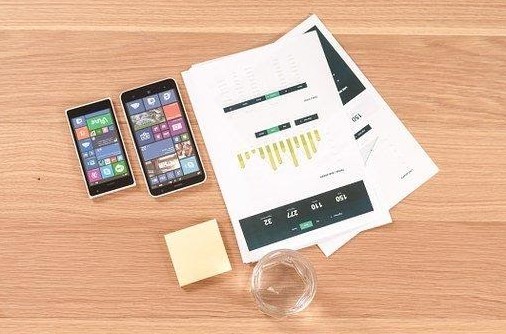According to BuildFire, there are more than 2.2 million apps available in 2019. This is because the power of apps is indisputable. They can be used to drum up brand loyalty, increase sales, and make the customer experience more convenient. However, these apps don’t pop up out of anywhere and every great app goes through a careful and thoughtful development process. Wireframing is the second major step in the app development process. Once a company has an idea brainstormed, they don’t immediately start coding it into existence. Instead, careful plans are drawn up in a process known as wireframing before the first working prototype is developed.
Creating a wireframe isn’t a process to complete haphazardly, though. To ensure that the plans developed are usable in the prototype, it’s crucial to carefully consider what steps developers are taking during the process and how those steps are carried out. These five tips are critical to keeping in mind as your company creates its own app.
Start with a Life-Size Base
The first thing to do with a wireframe is to create the template the production team is going to work off of. It can be tempting to just draw out a rectangular screen and get to work but it’s much better to measure out a realistic phone screen size. Of course, this isn’t a hard, set-in-stone measurement thanks to varying mobile device models but a realistic choice will allow developers to operate with more accurate proportions. It can be helpful to create models of different screens on different screen sizes to judge scalability.
Create a User Flow

One of the most basic things to come up with when creating a wireframe for an Android app is knowing how that app will flow. When a user opens an app or completes an action, the app has to have a specific reaction. So, it’s necessary to have a plan that will demonstrate how the app will transition from screen to screen to provide the basic details of how the program will run.
Create an Aesthetic Plan
While Android app development put a heavy emphasis on technical aspects of apps, they also put a large focus on the appearance of those apps. Not only does a program need to look attractive, but it also needs to be easy to navigate and put the appropriate amount of focus on the right features to draw the user’s eye to them. When creating the wireframing for an app, the appearance of each screen in the user flow is also critically important.
Start to Swap In Real Content

When a company starts to create a wireframe for an app, they typically use filler or dummy information to fill out a general idea. For example, a designer might input a box with a title to represent a feature rather than taking the time to detail that feature itself. Once the concept is further developed, towards the end of this stage of the development process, you can transfer it into specific details.
Present It to Fellow Developers
This is a step that can be repeated throughout the entire design process. Putting an entire app development project on even a single team of a member from android app development services can lead to a limited perspective. By presenting it to other professionals that can offer the same general perspective as a new user, companies can get an idea about how the target market they’ll be working with will react to the technology put in front of them.
Once these steps have been completed, it’s time to move onto the next stages of development such as prototype creation. This will give your company the chance to put the ideas that are crafted in this stage into code and technological form.
